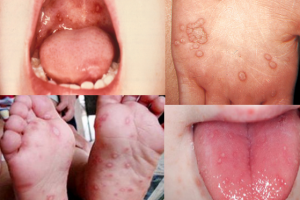Author: Brit Long, MD (@long_brit) // Reviewed by Alex Koyfman, MD (@EMHighAK); Manny Singh, MD (@MPrizzleER)

The IDSA published guideline updates on complicated UTI in July 2025. This post will provide the major takeaways for emergency clinicians.
Background
UTI is one of the most common infections managed by physicians and is a leading cause of gram negative bacteremia. While UTIs are more common in women, rates are increasing in both women and men. Resistance rates to commonly used antibiotics are also increasing. While a prior IDSA guideline focused on uncomplicated cystitis and pyelonephritis in women, there was no discussion of complicated UTI or UTI in men. This most recent guideline updates the classification and management of complicated UTI.
Definitions
Uncomplicated UTI can occur in men and women. Patients with underlying urologic abnormalities (BPH or a cystocele), diabetes, or immunocompromise are not automatically classified as having a complicated UTI. Systemic signs of illness (fever, flank pain, chills, rigors, CVA tenderness), obstruction in the upper urinary tract (stone), or renal parenchymal involvement is a complicated UTI. Presence of an indwelling catheter/nephrostomy tube/ureteral stent is also a complicated UTI.



*Of note, pertaining to definitions of “male” and “female” in the guideline, UTI research is largely limited to cisgender male-bodied persons and female-bodied persons and largely fails to distinguish between gender identity and biological sex. Reference in the literature to “men” or “males” and “women” or “females”, often used interchangeably, suggests gender identities that participants may or may not have for themselves and omits people with nonbinary identities. The terms “male” and “female” are sex-based terms that refer to binary biological characteristics and exclude those whose bodies do not fit the binary. Acknowledging these limitations in language and past research, the guideline employed the language used in original research studies.
Initial Selection of Empiric Antibiotics for Complicated UTI
For patients with sepsis due to complicated UTI, the IDSA recommends third- or fourth-generation cephalosporins, carbapenems, piperacillin-tazobactam, or fluoroquinolones, rather than newer agents (novel beta lactam-beta lactamase inhibitors, cefiderocol, plazomicin) or older aminoglycosides (conditional recommendation, very low to moderate certainty of evidence). They recommend a four-step approach (below).
For patients with complicated UTI without sepsis, the IDSA recommends third- or fourth-generation cephalosporins, piperacillin-tazobactam, or fluoroquinolones, rather than carbapenems and newer agents (novel beta lactam-beta lactamase inhibitors, cefiderocol, plazomicin) or older aminoglycosides (conditional recommendation, very low to moderate. They do state that other agents (e.g., trimethoprim-sulfamethoxazole, amoxicillin-clavulanate, first or second-generation cephalosporins) are less well studied but may be appropriate in select settings or situations for empiric oral treatment of complicated UTI. Nitrofurantoin and oral fosfomycin are generally not appropriate choices for complicated UTI because they may not achieve adequate levels in the renal parenchyma and bloodstream.

^Difficult-to-treat resistant pathogens may require use of drugs not listed here (e.g., colistin); refer to IDSA Antimicrobial Resistance guidance. **Sepsis is life-threatening organ dysfunction related to infection, identified by SOFA score of 2 or higher. Screening tools such as qSOFA or SIRS may be useful for presumptive identification. In sepsis with shock, in step 4 choose an antibiotic for which the susceptibilities of the most relevant organisms are at least 90%. In sepsis without shock, in step 4 choose an antibiotic for which the susceptibilities of the most relevant organisms are at least 80%. *Third and fourth generation IV cephalosporins include: ceftriaxone, ceftazidime, cefotaxime, and cefepime. (see Table 2.1 & 3.1, Dosing of IV and oral antibiotics for cUTI). &The fluoroquinolones approved for UTI currently include ciprofloxacin and levofloxacin. #The carbapenems currently include imipenem-cilastatin, doripenem, meropenem, and ertapenem. +The novel beta lactam-beta lactamase inhibitors currently include ceftolozane-tazobactam, ceftazidime-avibactam, meropenem-vaborbactam, and imipenem-cilastatin-relebactam. %Older aminoglycosides include gentamicin, amikacin, and tobramycin.
Guide to Empiric Choice
The IDSA recommends a four-step approach to determining appropriate empiric choice:
1. Evaluate severity of illness
For patients with suspected complicated UTI (including pyelonephritis), the IDSA suggest that the selection of empiric antibiotic therapy be initially guided by the severity of illness, specifically by whether the patient is in sepsis or not (conditional recommendation, very low certainty of evidence). Of note, these guidelines utilize the Sepsis 3 definition.
2. Evaluate patient risk factors for resistant uropathogens
In patients with complicated UTI (including acute pyelonephritis), the IDSA suggest avoiding antibiotics to which the patient has had a resistant pathogen isolated from the urine previously (conditional recommendation, very low certainty of evidence). Utilize more recent urine cultures if available.
In patients with complicated UTI (including acute pyelonephritis), the IDSA suggest avoiding fluoroquinolones if the patient has been exposed to that class of antibiotic in the past 12 months (conditional recommendation, very low certainty of evidence).
3. Evaluate other patient specific considerations
In patients suspected of complicated UTI, empiric antibiotic therapy selection should account for patient-specific considerations (e.g. risk of allergic reaction, contraindications, or drug-drug interactions) to avoid preventable adverse events (good practice statement).
4. Use Antibiogram
In patients with sepsis assumed to be caused by complicated UTI (including acute pyelonephritis), the IDSA suggest using an antibiogram to further tailor empiric antibiotic choice only if the antibiogram is local, recent, and relevant to the patient (conditional recommendation, very low certainty of evidence). Local is considered to be derived from the same healthcare facility based on data from the previous 12 months. If using an antibiogram to tailor empirical antibiotic choice, consider selecting an antibiotic for which 90% or more of the most relevant organism(s) are susceptible in patients in septic shock, or for which 80% or more of the most relevant organism(s) are susceptible in patients with sepsis without shock.
For patients with suspected complicated UTI without sepsis (including acute pyelonephritis), the IDSA make no specific recommendation about using an antibiogram to further tailor empiric antibiotic choice (no recommendation, knowledge gap).


Selecting Definitive Antibiotic Therapy for Complicated UTI
In patients with confirmed complicated UTI, the IDSA suggest selecting a definitive effective antibiotic with a targeted spectrum based on the results of urine culture (identification and susceptibility) as soon as these are available, rather than continuing empiric broad-spectrum antibiotics for the complete duration of treatment (conditional recommendation, low certainty of the evidence). De-escalation when possible is emphasized in the guidelines.
Transitioning from IV to PO Antibiotics
In patients with complicated UTI (including acute pyelonephritis) treated initially with parenteral therapy who are clinically improving, PO tolerant, and for whom an effective oral option is available, the IDSA suggest transitioning to oral antibiotics rather than continuing parenteral therapy for the remaining treatment duration (conditional recommendation, low certainty of the evidence). The PO route is safe, effective, and cheaper, while the parenteral route is associated with higher cost, adverse events, and resource use.
In patients presenting with complicated UTI (including acute pyelonephritis) and associated Gram-negative bacteremia treated initially with parenteral therapy who are clinically improving, able to take oral medication, and for whom an effective oral option is available, the IDSA suggest transitioning to oral antibiotics rather than continuing parenteral therapy for the remaining treatment duration (conditional recommendation, very low certainty of the evidence).


Duration of Antibiotics for Complicated UTI
In patients presenting with complicated UTI (including acute pyelonephritis) and who are improving clinically on effective therapy, the IDSA suggest treating with a shorter course of antimicrobials, using either 5-7 days of a fluoroquinolone (conditional recommendation, moderate certainty of evidence) or 7 days of a non-fluoroquinolone antibiotic (conditional recommendation, very low certainty of evidence), rather than a longer course (10-14 days). The duration of therapy is counted from the first day of effective antibiotic therapy.
Men with febrile UTI in whom acute bacterial prostatitis is suspected may benefit from a longer treatment duration (i.e., 10-14 days), although evidence to guide the optimal duration in this subgroup is lacking.
In patients presenting with complicated UTI with associated Gram-negative bacteremia and who are improving clinically on effective therapy, the IDSA suggest treating with a shorter course (7 days) of antimicrobial therapy rather than a longer course (14 days) (conditional recommendation, low certainty in the evidence).
Reference:








